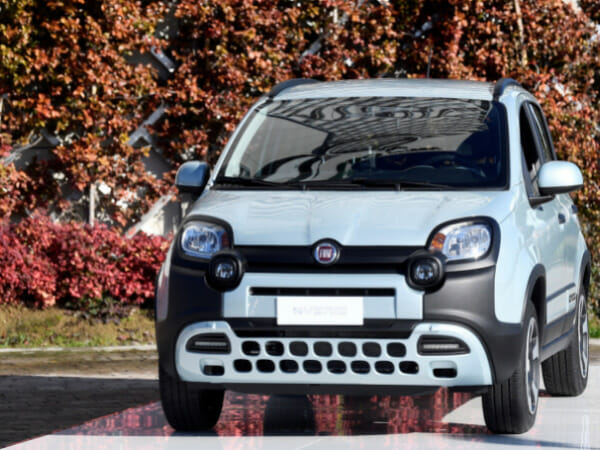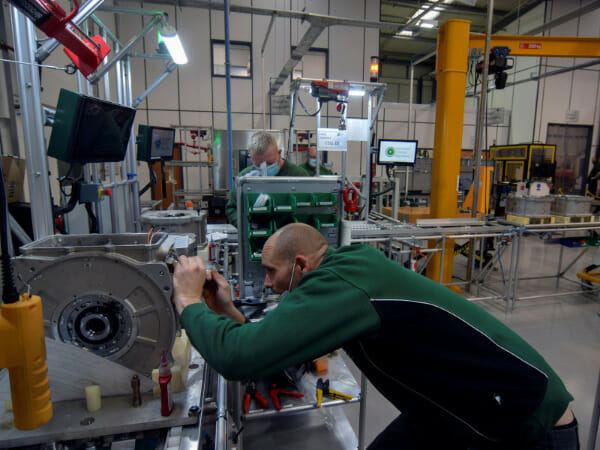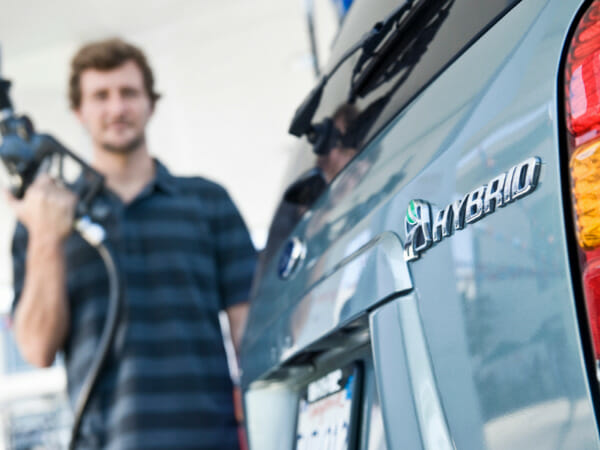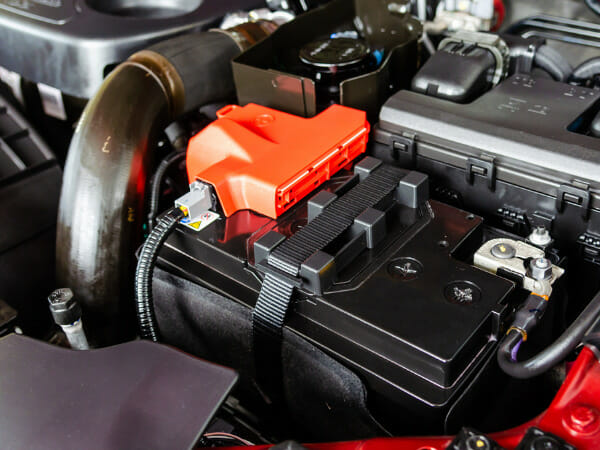Hybrid vs. Electric Cars – Which One Is Better?
Tesla has become one of the most exciting innovations of the 21st century. However, electric cars have been a part of our world for over a century.
Despite what most people believe, the electric car dates back to the 19th century. There was even a point when EVs made up over a third of all vehicles on the road.
However, after the mass adoption of gasoline cars and gasoline engines, they took a backseat. This was just before the first world war; fossil fuels were still new to us, and oil had become a key component form for many engines.
In those days, electric auto brands were rather difficult to maintain for a long time. Early EVs used lead-acid batteries, had low speeds, and the majority of the charging was often done at home with electricity.
With Henry Ford’s assembly line, gasoline cars easily became cheaper and more accessible than electric models. ICE vehicles were the vast majority on roads across the USA. Before long, EVs were very obscure and hard to find.
The Return of Electric Cars

Cars are seen stuck in a traffic jam in central Brussels, Belgium, April 29, 2019. REUTERS/Francois Lenoir/File Photo
It took many decades, but in the 1990s, EVs became an exciting and innovative idea again. However, these EVs were not being built by legacy automakers.
It took the innovation of Tesla in the early 2000s for EVs to enter the mainstream market once more. By 2008, Tesla released the first electric vehicle that had a range of more than 200 miles and was called it the Roadster.
While prior electric cars were slow and rather unappealing to the eye, Tesla’s Roadster was sporty, exciting, fast, and cost $100,000. This brought the turnaround that the electric vehicle needed to win the hearts of consumers again.
Before long, other companies like Nissan and Chevrolet began building and releasing revolutionary EV vehicles. By 2010, The Nissan leaf was just over $25,000 in price and cool travel 73 miles. By 2016, The Chevrolet bolt EV could go for 238 miles and cost just $30,000.
Today, automobile companies like Volkswagen, Ford, and even General Motors have gone deep into the electric vehicle market. You can get a new car running on electricity alongside a new electric-gasoline hybrid car; the idea of driving a car without filling up your gas tank at gas stations has been popularized. All you need is a source of electricity and a power cord you’re good to go. EVs have become some of the best cars in the world today.
What Are Hybrid Cars?

A new Fiat Panda mild-hybrid car is displayed at a Fiat Chrysler event held to unveil its first hybrid models, in Bologna, Italy, February 4, 2020. REUTERS/Flavio Lo Scalzo/
A hybrid, simply put, combines an electric motor with a gasoline-powered engine(internal combustion engine) and both options can move the car. Sometimes, the electric motor moves the car, and other times it’s the gasoline engine that does the work. They can even combine to work hand-in-hand (they are not fully electric cars).
Essentially, the point of the hybrid car is to reduce the amount of gasoline burned, while improving performance with electric power. The large battery pack – which gives the electric motor energy – is replenished by the heat which is generated by the car’s brakes. The term for this is regenerative braking, and the idea behind it is straightforward.
Regenerative Braking
Usually, when you step on the brake, your car slows to a stop. However, energy in the form of heat is lost every time the brakes hold the tires and slow the car down. That energy during deceleration is captured and used to charge the small battery.
This will usually charge the battery slowly, but it generally improves the car’s overall efficiency. Also, not all hybrids have to use a regenerative braking system. Some hybrids use the gasoline engine to charge the battery too.
Types of Hybrid Engines

Employees at Advanced Electric Machines work on test models of a motor for an electric vehicle that does not include either rare earth magnets or copper and uses electrical steel and aluminium instead, in Washington, Britain, November 26, 2021. Picture taken November 26, 2021. REUTERS/Nick Carey
Not all hybrid engines are built in the same way, but three popular types of hybrids are on the market. These include parallel hybrids, series hybrids, and plug-in hybrids.
Parallel Hybrid
This hybrid type is very common, especially in popular car companies like Honda, Toyota, Ford, and Nissan. The electric motors and the gasoline engine are connected in a simple transmission where each power source works together to move the car.
The transmission of the car can either be manual, automatic, or continuously variable transmission (CVT). The transmission type, and the gasoline engine size, are key in deciding how a parallel hybrid drives on the road.
Series Hybrid
The EV motors are the key factor in this hybrid type, as it is built to provide thrust and keep the car moving. The entire point of the gasoline engine is to keep the battery recharged. In fact, there are no connections between the gasoline engine and the wheels of the car.
Due to that lack of connection, the gasoline engine never engages the car itself, which reduces the vibrations within the car. This isn’t a very popular option, but there are BMWs, like the i3, that use this particular hybrid type.
Plug-in Hybrid
With a plug-in hybrid electric auto, you have to charge your car’s battery using a proper electricity source, like a car charging station or the socket in your garage. It doesn’t use the gasoline in the engine to recharge the battery, and the combustion engine only gets used when the car runs out of battery juice.
If you deplete the driving range on an EV, you’ll have enough gasoline to get you to an EV charging station. In a way, the plug-in hybrids revert to a parallel hybrid when it runs out of juice. So, let’s take a look at the differences between hybrid vs. electric.
Electric vs. Hybrid: The Key Difference

Technicians work in the assembly line of German carmaker Volkswagen’s electric ID.3 car in Dresden, Germany, June 8, 2021. REUTERS/Matthias Rietschel/
The main item that differentiates from hybrid cars is the internal combustion engine in the hybrid. Sometimes, you might hear a manufacturer market their car as a fully electric vehicle, and that simply lets you know that the car is run entirely by electric motors.
Both vehicles have battery packs, but the electric cars will stop moving if the battery empties. A hybrid car is capable of switching to its gas engines, making it effortless and smooth. So if you’re driving a hybrid car, you can easily drive into a gas station and fill your gas tank for future use.
Charging the battery pack
With both, chances are you will need to plug in at an electric car charging station and gain some kilometers of driving range, especially when you’re sitting in the office or resting at home. There are two popular levels of EV chargers, both of which can charge the high voltage battery pack, just in different timeframes.
The standard Level 1 charger will take several hours to recharge your car. Most homes have electricity and can use a Level 1 charger. Plug in the car to charge overnight while you rest.
Charging locations in public spaces and parking areas use the Level 2 charger, which can charge seven times faster than the Level 1 charger.
Why You Should Consider Buying an EV

A new Model Y leaves after the opening ceremony at the new Tesla Gigafactory for electric cars in Gruenheide, Germany, March 22, 2022. Patrick Pleul/Pool via REUTERS/File Photo
Powertrain technologies have improved the efficiency of the electric car. Now, all electric range anxiety can be reduced somewhat. It is powered solely by batteries and car motors. In fact, many EV owners have been openly proud of their cars, setting up youtube as well.
Hybrid vs. Electric: Pros and Cons
There are a few factors to review when looking at the pros and cons of EVs and comparing them to hybrid vehicles.
Price
The first question that comes to mind when we compare these high-end autos is the price; what are the cost differences?
Both hybrids and EVs have a typically higher cost than the average car run with gasoline. However, even though they have higher sticker prices, they can cost less due to incentives and rebates from the government.
The United States federal government offers up to 7,500 dollars in tax credit for EVs and hybrid vehicles. This rebate doesn’t even account for other localized incentives depending on where you live and where you are buying your vehicle from.
Looking at both vehicles outside the government rebates and incentives, there is a large difference in the prices between EVs and hybrids. Hybrid vehicles cost less than EVs. Hybrid cars are not a new innovative idea. Rather, they have been on the market for quite some time, which allows for more options in the price area.
Gasoline vehicles or internal combustion engines offer some of the lowest prices when it comes to the purchase price. Gasoline vehicles have been in the market for over a century, making them the standard go-to for cars and other vehicles.
However, the prices of EVs and hybrid vehicles will likely continue to keep dropping, thanks to an improvement in technology and affordable batteries. A very strong belief that within a few years the price of batteries would have dropped to the point where EVs and hybrids would be as affordable as conventional ICE vehicles.
Range – How Far Can These Cars Go on Full Charge?

A view of the depot tower of German carmaker Volkswagen in Dresden, Germany, June 8, 2021. REUTERS/Matthias Rietschel/
This is one area where all-electric vehicles fall short of other types of vehicles, including hybrids. Due to how expensive batteries are, many EV autos have a driving range of fewer than 200 miles on a full charge.
On the other hand, an ICE vehicle can go for several hundred miles before needing a refill, which is great for road trips. Because a regular hybrid electric vehicle has fuel engines, it is possible for them to achieve a similar range as well. This is beneficial during road trips without EV charging stations.
People with a longer commute who use hybrid vehicles to get to and from work will hardly need to rely on gasoline as they can charge easily when they get home. The usual driving here and there can easily be done with battery power. In emergencies or longer trips, the regular hybrid vehicle can easily switch to using the gas engine when necessary.
More expensive EVs have improved when it comes to range. The latest Tesla Model S has a range of 520 miles on a single charge. Much cheaper cars with internal combustion engines can achieve that same range with relative ease.
Hopefully, as the price of batteries reduces and the technology around range continues to improve, it will be possible to find an affordable electric vehicle that can go over 700 miles on a single charge.
Fuel Costs
Without any doubt, these cars are the cheapest vehicles to fuel. According to consumer reports from 2020, an average electric vehicle owner that charges their car at home with electricity can save up to $1000 a year on average.
It does not help that fuel prices have skyrocketed in recent weeks, partly due to the recent events in Eastern Europe. With gas prices hitting record highs, using an electric car will certainly save you a lot more than $1000 a year.
Maintenance Costs
All electric vehicles have just two moving parts, making them very easy to maintain. This is where all-electric vehicles beat hybrid and gasoline vehicles, hands down. The powertrain technologies make it easy to keep the moving parts even fewer.
Only two moving parts essentially translate to know or oil changes or spark plug changes or fan belt repairs. Nothing requires consistent management or less maintenance with electric vehicles.
Gasoline vehicles have to make do with the fact that they have engines, and so do hybrids. These engines have over a thousand moving parts, and each of those parts will need eventual maintenance at some point.
While EVs are more expensive at the purchase level, ICE vehicles will have you spending twice as much on repairs. When ranked alongside hybrids, electric vehicles are nearly a third cheap.
Related Articles
Hybrid vs. Plug-In Hybrid Cars – Knowing the Key Differences
Driving Feel
When driving an electric vehicle, it is surprisingly quiet and is now notable for its very quick acceleration. A gasoline vehicle cannot be as quiet as an electrified vehicle.
Hybrids are relatively noisy, especially when they have switched to the combustion engine. Also, hybrid cars work by having a transmission that changes gear. This will certainly provide a not-so-smooth trip, in comparison with the electric models.
Hybrids also offer less power to the driver, especially because the engine that accompanies the hybrid vehicle is often small. Some plug-in hybrids may offer some more power, thanks to how it is designed.
In Conclusion
Hybrid vs. electric, but which do you prefer? Would you go for fully electric vehicles or pick a hybrid type. Do you like having fuel in the tank? After all, this can improve your limited range of anxiety. Hybrids are energy efficient, and they also have high fuel efficiency.
Many people are used to driving regular cars, so switching to a car that uses both battery and a combustion engine would be quite easy. This makes the plug-in hybrid a great option.
Getting a plug-in hybrid as your first hybrid vehicle can come in very handy, especially in city driving conditions, because with a full gas tank and a perfect battery, you would have no problems. How a plug-in hybrid function is dependent on the manufacturer.




